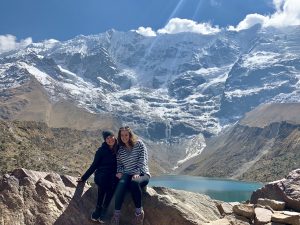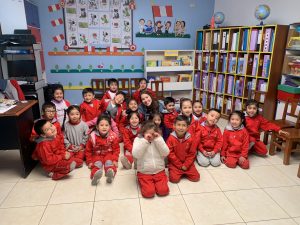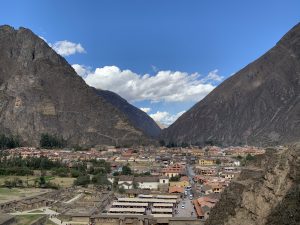While volunteering in Cusco, I was fortunate to be able to take full advantage of the incredible abundance of history and natural beauty located within the city and its many surrounding towns. Although the majority of our seven weeks were spent volunteering at our two community partners, a preschool and a home for people with disabilities, my roommate and I were able to spend the weekends exploring the city as well as take part in several cultural excursions. We were lucky to visit many incredible, unique places such as Machu Picchu and Lake Titicaca – two places that I have studied about multiple times during my time at Rollins and was awestruck to be able to visit them in person. Although it was undeniably incredible to visit these places, my favorite weekend excursion was not to the major tourist spots in Peru, but instead was a weekend spent with my host family in their country home in Ollantaytambo.
In Cusco, we lived with the loveliest family – a mom and a dad, four children (the majority of whom were under the age of twelve), and their adorable family dog, Ottie. They immediately welcomed us into their home and made us feel like a part of their family rather than guests. For instance, on the weekend of Peruvian Independence Day we all traveled together, including Ottie, an hour and a half by bus to a small town, Ollantaytambo. While there we explored the Incan ruins, that my host mom giddily exclaimed she used to play hide and seek in as a child, took a nature walk as we were surrounded by the breathtaking Andes mountains, and shared many conversations and laughter with the family as we sat around the dinner table. Although Ollantaytambo is known to most people for its Incan ruins, I will always remember it for the incredible weekend spent with my Peruvian family.

















 The sea turtles are only released when the staff at the conservation center observe them and think they will be able to survive in the wild. Also, a lot of our work at the sea turtle conservation center revolved around beach cleanups, with the ultimate goal of making the beach more attractive for turtles to lay eggs. For these reasons, I believe that the hawksbill turtle that we released is currently swimming happily somewhere in the Indian Ocean, catching crabs and jellyfish, waiting to return to Nusa Penida to lay eggs of her own.
The sea turtles are only released when the staff at the conservation center observe them and think they will be able to survive in the wild. Also, a lot of our work at the sea turtle conservation center revolved around beach cleanups, with the ultimate goal of making the beach more attractive for turtles to lay eggs. For these reasons, I believe that the hawksbill turtle that we released is currently swimming happily somewhere in the Indian Ocean, catching crabs and jellyfish, waiting to return to Nusa Penida to lay eggs of her own.

